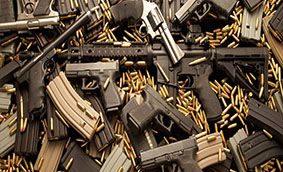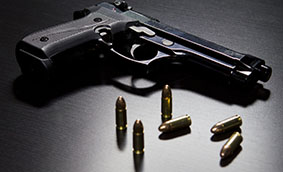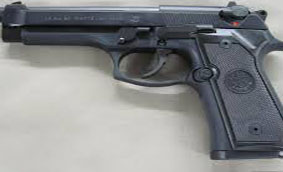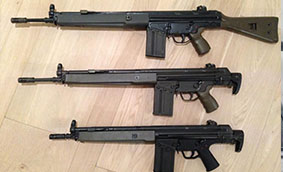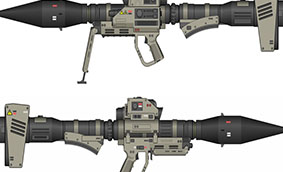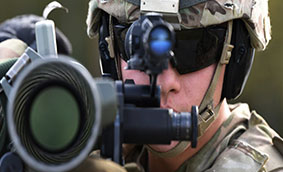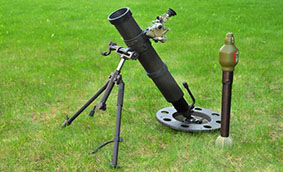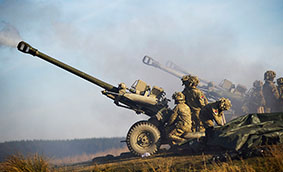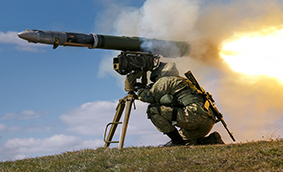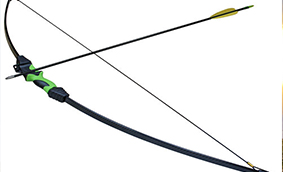- Have any questions?
- info@cuttingedge.com.pk
Weapon & Ammunition
Ammunition (informally ammo) is the material from any weapon which is fired, dispersed, dropped or exploded. Ammunition is both expendable weapons (e.g., bombs, rockets, explosives, land mines) and the component parts of other weapons that have an impact on a target (e.g., bullets and warheads).Almost all mechanical guns require some form of ammunition to function.One can trace the word ammunition back to the mid-17th century.The word, for the material used for war, comes from the French la munition. Ammunition and ammunition are often used interchangeably, but ammunition now typically refers to the actual system of guns with the ammunition needed to operate it.Munition is still referred to in some languages other than English, for example French ("munitions"), German ("munition") or Italian ("munizione").
Ammunition is intended to project a force against a selected target to have an effect (usually lethal, but not always). The most iconic example of ammunition is the firearm cartridge which includes all the components required in a single package to deliver the weapon effect.
Ammunition comes in a wide variety of sizes and types, and is often designed to work in specific weapons systems only. Nevertheless, there are internationally recognized requirements for certain types of ammunition (e.g., 5.56 mm NATO) that allow different arms and users to use them. There are also specific types of weapons intended to have a special effect on a weapon, such as armor-piercing shells and tracer ammunition, which are only used in such situations. Ammunition is usually colored explicitly to help identify and avoid unintended use of the wrong types of ammunition.
Design
Munition design has changed throughout history, creating different weapons and having different effects. Historically, ammunition was of relatively simple design and construction (e.g. sling-shot, stones thrown by catapults), but as the design of guns (e.g. rifling) progressed and became more sophisticated, the need for more advanced ammunition increased. Modern munitions can vary considerably in quality but are typically made to very high standards. For example, hunting ammunition may be designed to expand within the target, increasing the damage inflicted through a single bullet. Anti-personnel shells are designed to break into many pieces, and can impact a wide area. In particular, armor-piercing rounds are hardened to penetrate armor while smoke ammunition covers an area with a fog that screens people from view. Less common ammunition (e.g., 5.56 all-in - one NATO) can often be slightly altered to give it a more specific effect (e.g., tracer, fire), whereas larger explosive rounds can be altered by using various fuzes.Components
- Fuze or primer
- explosive materials and propellants
- projectiles of all kinds
- cartridge casing
